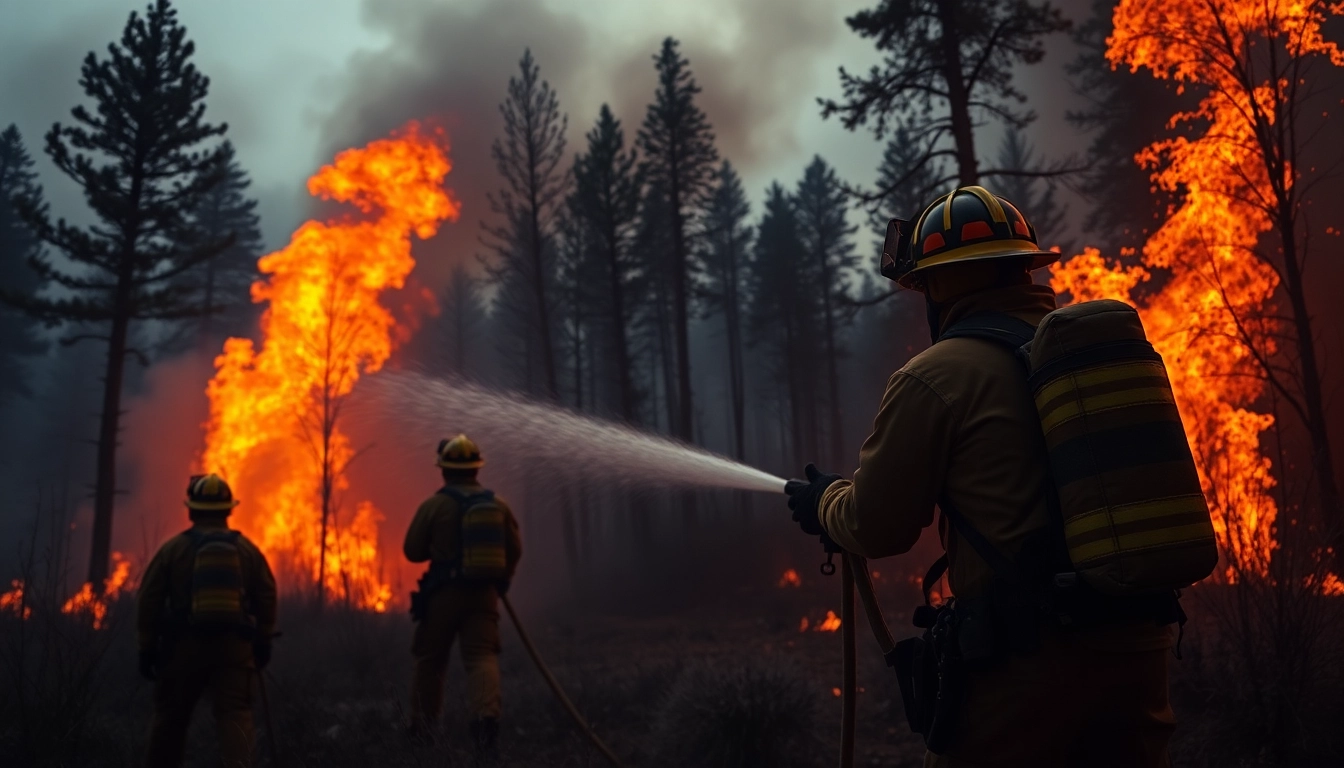Introduction to Wildfire Events
Wildfire events have become a frequent topic of concern and discussion, especially as the world grapples with changing climates and ecosystems. These events not only threaten human life and property but also have profound impacts on the natural environment. Understanding wildfire events is crucial for effective management and mitigation strategies, enabling communities to prepare, respond, and recover from the consequences of wildfires.
What are Wildfire Events?
Wildfire events are uncontrolled fires that burn in forests, grasslands, or other wild lands. They can occur due to natural causes or human activities. The scale of these fires can vary significantly, from small burns that impact a limited area to large-scale infernos that devastate thousands of acres. The dynamics of wildfire operations include the behavior of fire, the materials that fuel it, and the weather conditions that influence its spread.
Causes and Triggers of Wildfire Events
The causes of wildfire events can be broadly classified into natural and human-induced factors. Natural causes primarily include lightning strikes, which can ignite fires in dry conditions. However, human activities, such as campfires left unattended, discarded cigarettes, and arson, are responsible for a significant percentage of wildfires.
Additionally, specific environmental conditions act as triggers for wildfires. Droughts often lead to drier vegetation, making it susceptible to ignition. Wind speeds can also influence the spread of fire, creating rapid expansion. Scientists and firefighters study these causes and triggers to predict and manage fire risks better.
The Importance of Understanding Wildfire Events
Comprehending wildfire events is essential for several reasons. Firstly, understanding their behavior helps in the development of effective fire management strategies. Secondly, it aids communities in preparing for potential wildfire threats, including developing emergency response plans. Lastly, awareness of wildfire impacts contributes to ecological conservation efforts. With more knowledge, society can implement preventative measures to protect both people and the environment.
Impact of Wildfire Events on Ecosystems
Effects on Flora and Fauna
Wildfire events can have both negative and positive effects on ecosystems. While many plants and animals suffer greatly from the immediate destruction, some species thrive post-fire. Certain plants, like sequoias and lodgepole pines, rely on fire for reproduction. The ash from burned vegetation can enrich the soil, fostering new plant growth. However, the loss of habitat and food sources can lead to population declines in various species, creating a ripple effect throughout the food web.
Alteration of Landscapes Due to Wildfire Events
Beyond immediate ecological effects, wildfire events can drastically alter landscapes. Fires can reshape terrains, create new water bodies, and change soil composition. Such transformations may lead to longer-term changes in plant community dynamics and animal migrations. Recovery can span decades, and researchers often monitor these areas to study regeneration and resilience strategies in affected ecosystems.
Long-term Ecological Consequences
The long-term consequences of wildfire events are complex. Ecosystems may take years or even centuries to return to their original state, depending on the severity of the fire and the resilience of the ecosystem. Soil erosion can become a problem due to the loss of vegetation, leading to challenges like sedimentation in waterways. Understanding these long-term effects is crucial for ecological recovery initiatives and habitat restoration projects.
Wildfire Events and Climate Change
The Relationship Between Climate Change and Wildfire Events
Climate change is increasingly recognized as a critical factor influencing the frequency and intensity of wildfire events. Rising temperatures can lead to longer dry seasons and increased dryness in vegetation, creating ideal conditions for fires to ignite and spread. Moreover, with shifting weather patterns, certain regions become more susceptible to wildfires. As a result, the number of intense fire seasons has seen a marked increase across many parts of the globe.
Adapting to Increased Frequency of Wildfire Events
With the anticipated increase in wildfire frequency, communities and policymakers must adapt their strategies. This includes enhancing land management practices, improving infrastructure resilience, and developing comprehensive fire management plans. Communities can implement controlled burns to reduce available fuel or create defensible space around properties to slow the fire’s spread.
Mitigation Strategies for Sustainable Development
Mitigation strategies play a critical role in minimizing the impacts of wildfire events. Sustainable land-use planning, reforestation efforts, and public education campaigns are essential components. Additionally, investment in research on wildfire behavior and training for emergency responders can greatly improve preparedness and response efforts, ultimately fostering safer and more resilient communities.
Preparation and Response to Wildfire Events
Best Practices for Wildfire Preparedness
Preparing for the possibility of wildfire events involves several best practices. Homeowners can create defensible spaces by clearing vegetation and debris away from structures. Community preparedness may also involve evacuation routes, emergency plans, and public education on fire risk factors. Regular fire drills and information dissemination can empower residents to respond effectively during wildfire emergencies.
Emergency Response Plans for Wildfire Events
Emergency response plans need to be well-defined and regularly updated to account for changing environments. These plans should include clear protocols for local emergency services, effective communication strategies, and resource allocations. Involving local authorities, fire service professionals, and community stakeholders ensures that plans are comprehensive and relevant to specific local contexts.
The Role of Community Engagement in Wildfire Events
Community engagement is vital for an effective approach to wildfire management. By educating residents about fire risks and safety measures, communities can foster a culture of preparedness. Initiatives such as volunteer fire patrols, community fire prevention programs, and neighborhood watch systems can significantly enhance collective resilience against wildfire threats.
Future Trends in Wildfire Events Management
Innovative Technologies for Wildfire Management
The future of wildfire management lies significantly in technological innovation. Advanced early-warning systems utilizing satellite imagery and drones can provide real-time data on fire spread and intensity. Predictive modeling software can help fire managers make informed decisions based on fluctuations in weather and vegetation conditions. These technologies will enhance firefighting strategies and improve resource allocation during wildfire events.
Policy Recommendations for Reducing Wildfire Risks
Policymakers play a critical role in establishing frameworks that mitigate wildfire risks. Stronger building codes in fire-prone areas, funding for community education programs, and investment in fire suppression resources are necessary. Implementing policies that address climate change can also help in managing the conditions that contribute to severe wildfire events.
Global Perspectives on Managing Wildfire Events
Learning from global practices can inform local wildfire management. Nations that have experienced severe wildfires, such as Australia and Canada, have developed sophisticated management strategies that can provide valuable insights. International collaboration on wildfire research and response strategies can maximize resource utilization, share best practices, and improve overall global wildfire preparedness.



